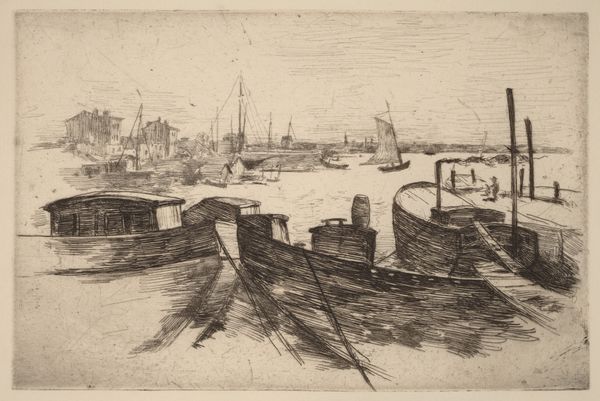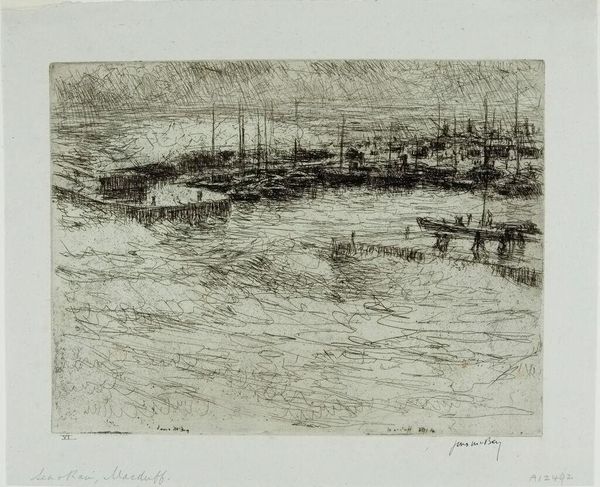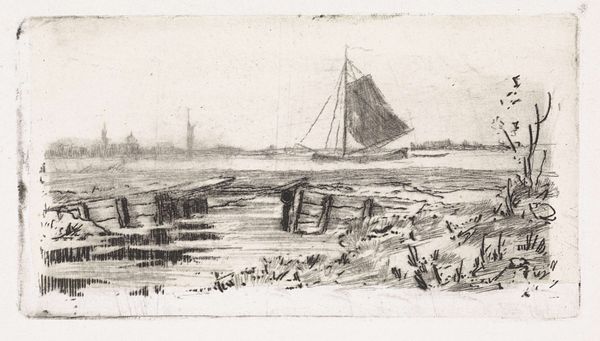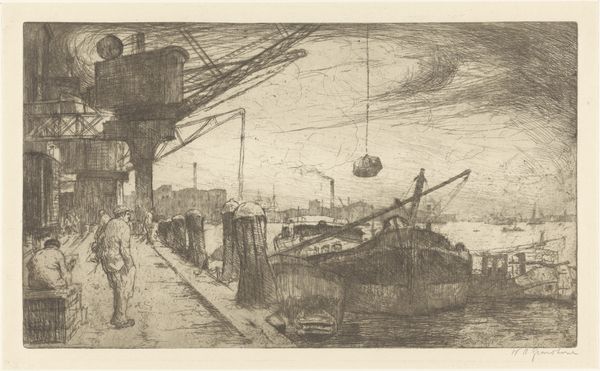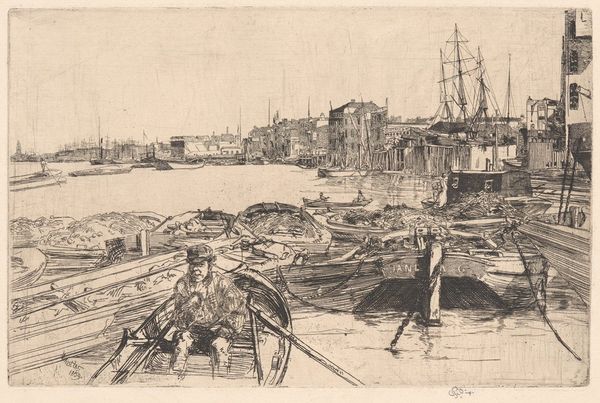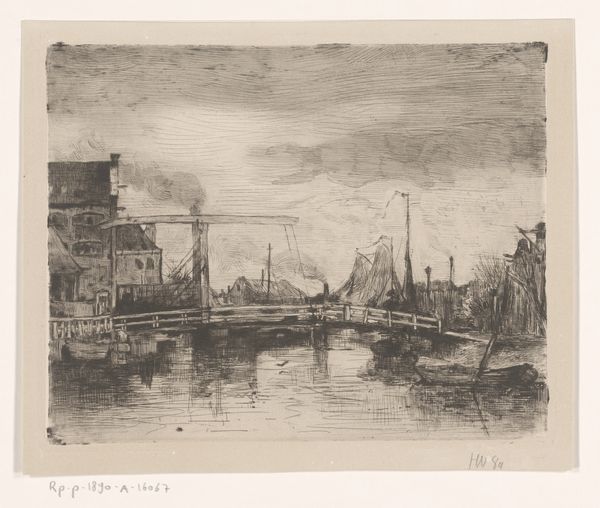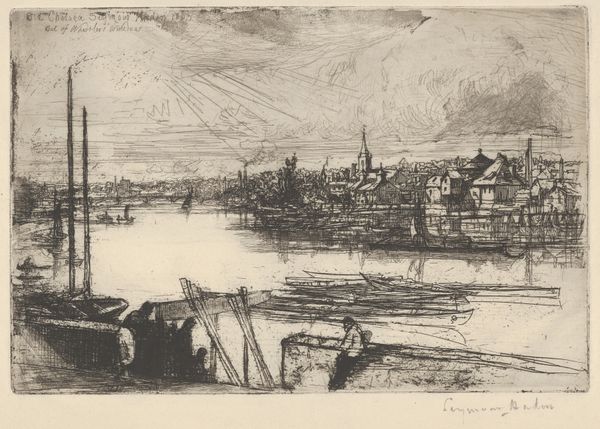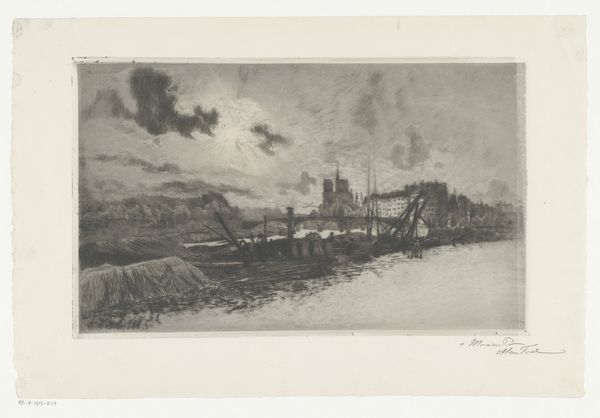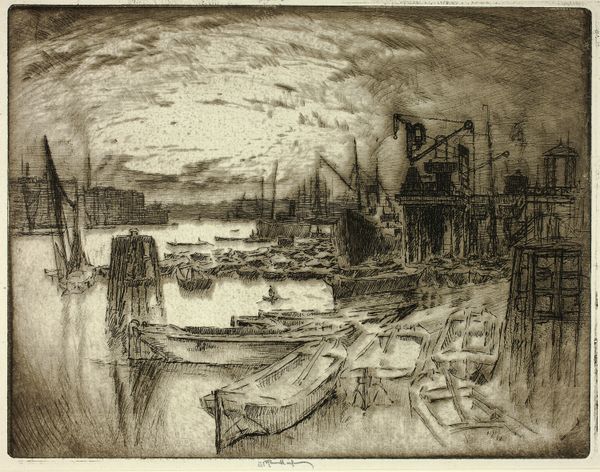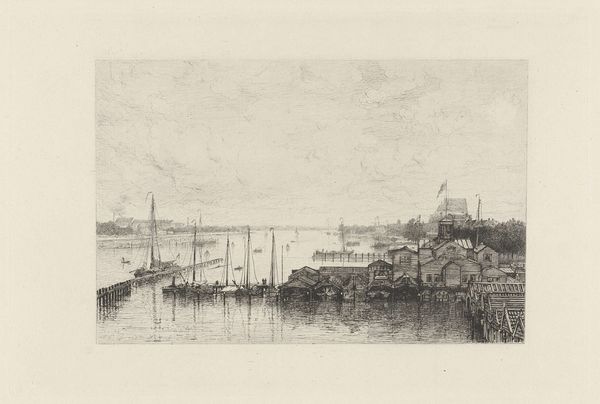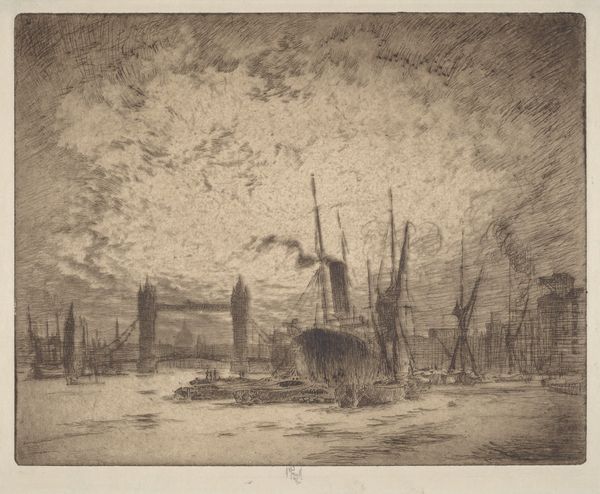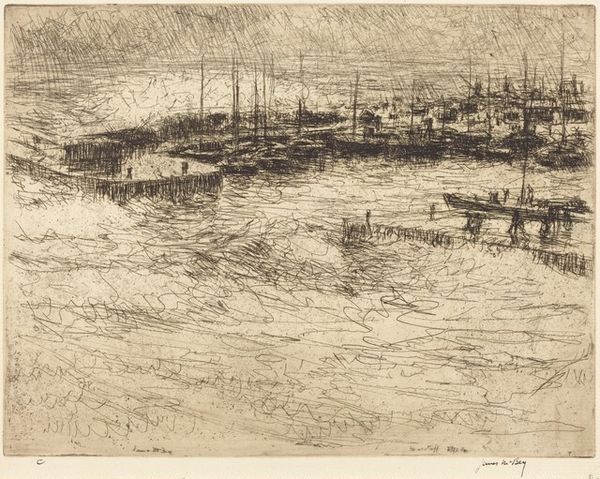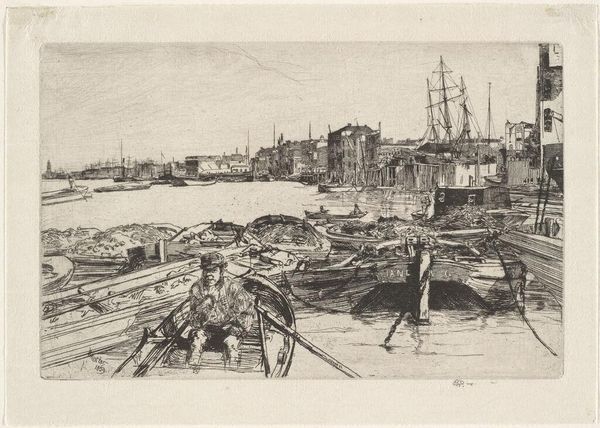![The Harbor at Viareggio [La Darsena] by Uberto dell'Orto](/_next/image?url=https%3A%2F%2Fd2w8kbdekdi1gv.cloudfront.net%2FeyJidWNrZXQiOiAiYXJ0ZXJhLWltYWdlcy1idWNrZXQiLCAia2V5IjogImFydHdvcmtzL2Q2MDMzNzJiLTljZGUtNDY4NC05ZDU4LWE1Yzc0MWE2NTE4NC9kNjAzMzcyYi05Y2RlLTQ2ODQtOWQ1OC1hNWM3NDFhNjUxODRfZnVsbC5qcGciLCAiZWRpdHMiOiB7InJlc2l6ZSI6IHsid2lkdGgiOiAxOTIwLCAiaGVpZ2h0IjogMTkyMCwgImZpdCI6ICJpbnNpZGUifX19&w=3840&q=75)
print, etching
# print
#
etching
#
landscape
#
cityscape
#
realism
Dimensions: plate: 26 × 44.1 cm (10 1/4 × 17 3/8 in.) sheet: 38.9 × 54.7 cm (15 5/16 × 21 9/16 in.)
Copyright: National Gallery of Art: CC0 1.0
Curator: I find this view of The Harbor at Viareggio, or La Darsena, remarkably peaceful, almost melancholic. Editor: Absolutely, there is a still quietness here. What period is this from? Curator: Uberto dell'Orto created this etching between 1873 and 1874. Looking closely, the dense network of fine lines suggests an emotional introspection, mirroring the subdued energy of the scene itself. Editor: Etchings, with their linear precision, often remind me of social blueprints, how the human element is embedded and circumscribed in larger networks. Take these two figures perched atop the quay, rendered almost diminutive in the shadow of such formidable architecture, seemingly caught in the wheels of industry... I'd wager these docks witnessed labor disputes and immigration traffic that altered the demographics. Curator: Interesting perspective. But I am immediately struck by how the mirrored image in the water anchors it: those blurred shapes remind me how memory operates; fragmented but there, retaining an essential form and imbuing these humble fishing boats with greater narrative depth. It also offers a sense of temporality. It suggests both reflection on the past and movement toward the future. Editor: Yes, the soft grey palette does mute the urgency, but beneath that, you also notice the power structures and industrial progress pushing the laboring class further to the margins of urban centers. Are we looking at an idyllic snapshot, or at the alienation of labor under new forms of industrialization? Curator: Perhaps it's a bit of both, this realistic style captures this historical juncture as an exploration of societal changes, a tangible shift within Europe in this timeframe, and as it speaks in symbols of an immutable maritime connection that dates to classical times. Editor: In any case, the image really speaks to how artists in the 1870s documented these transformations but often omitted the larger, structural realities they captured with their tools. Curator: A potent visual echo indeed, which keeps unfolding anew. Editor: Indeed. A valuable reminder to examine these layers of social visibility critically, and always beyond the literal portrayal.
Comments
No comments
Be the first to comment and join the conversation on the ultimate creative platform.
